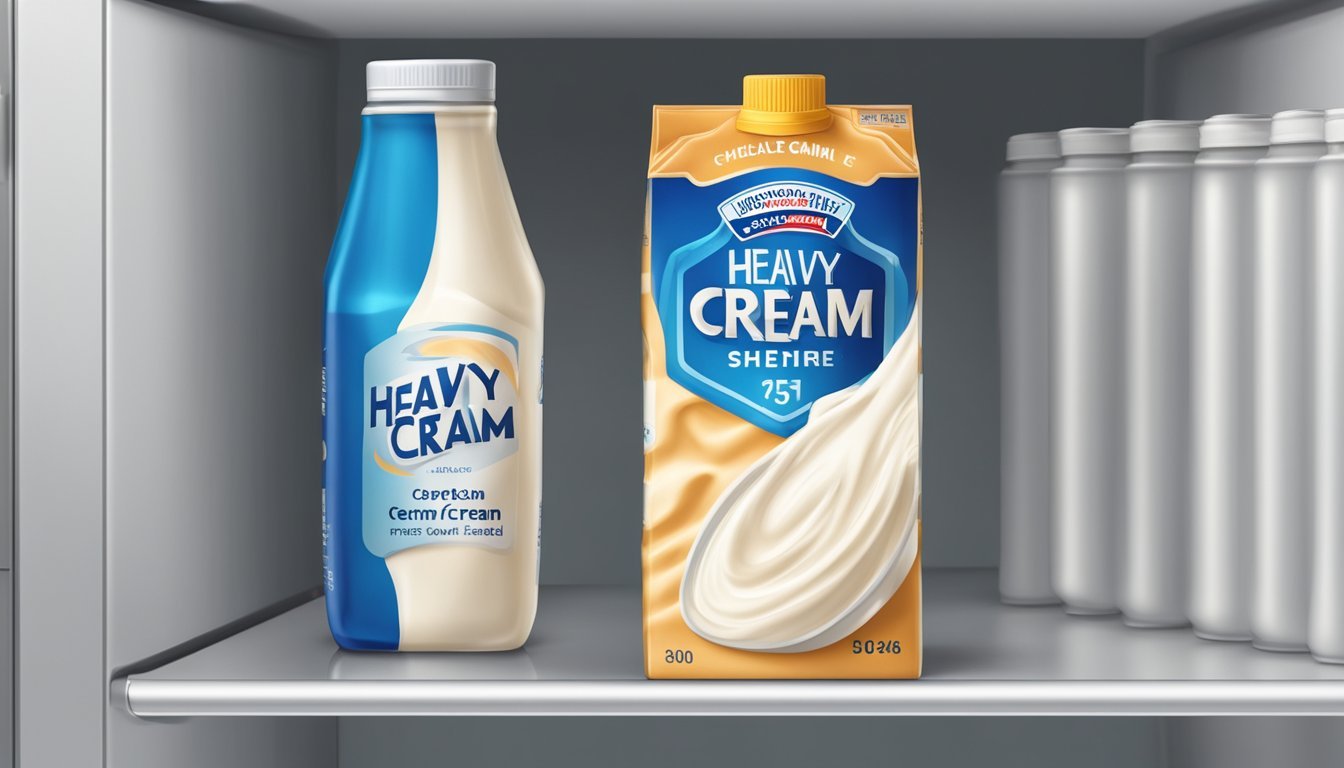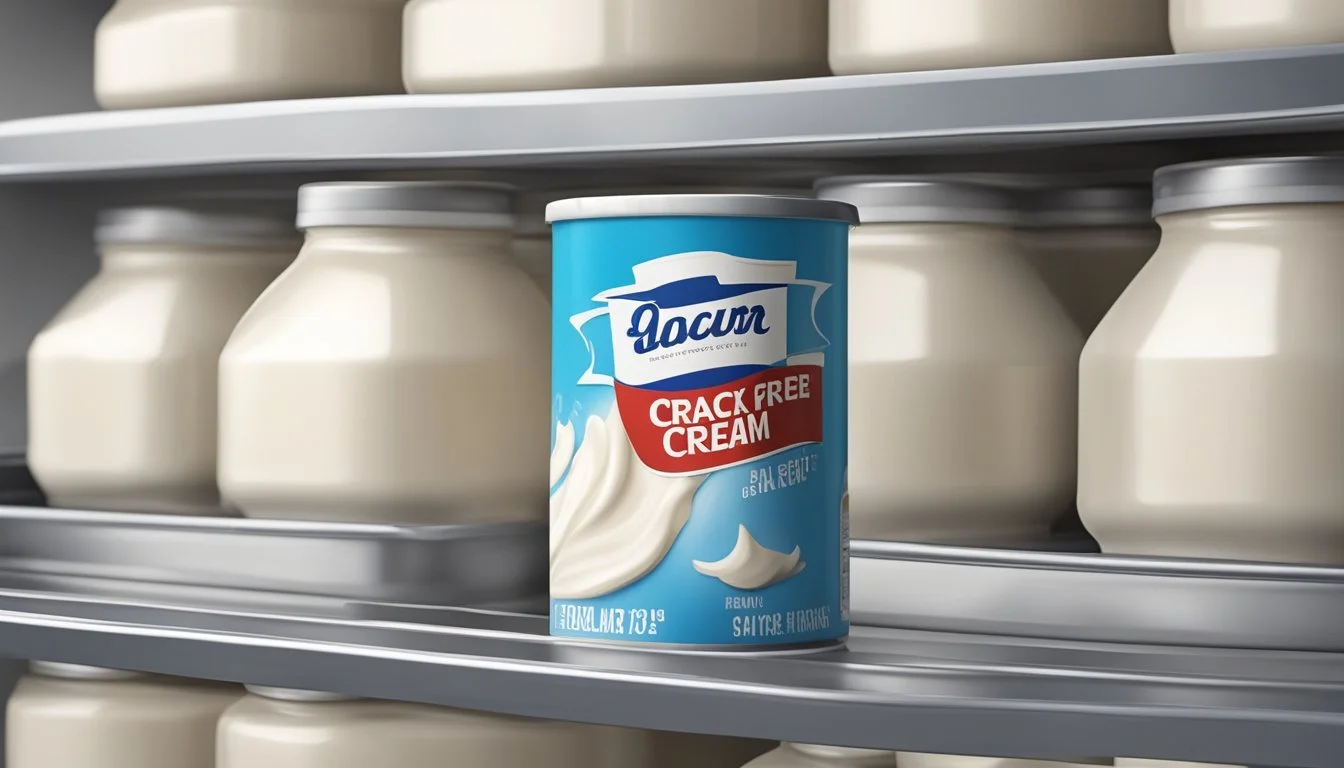How Long Does Heavy Cream Last?
Shelf Life and Storage Tips
Heavy cream (how long does cream last?), a dairy product with a high fat content ranging between 36% and 48%, is a versatile ingredient often used in recipes to add richness and texture. The shelf life of heavy cream is a topic of interest for both culinary professionals and home cooks, as it directly affects food safety and quality. Typically, heavy cream can last up to a month in the refrigerator, provided it is stored properly.
When it comes to storage, the temperature is a critical factor; heavy cream should be kept at a constant refrigerator temperature. The cream should not be left out at room temperature for extended periods. The high fat content aids in prolonging its freshness, but once opened, cream is subject to spoilage, with signs such as sour odor, discoloration, or mold indicating that it is no longer safe to consume.
To extend the shelf life of heavy cream beyond its typical expiration date, freezing is an option. Freezing heavy cream can allow it to last for an additional 1-2 months, but it is important to leave space for expansion in the container used for freezing. Properly stored, heavy cream can be a durable addition to a variety of dishes, from sauces to whipped toppings.
Understanding Heavy Cream
In the dairy aisle, heavy cream stands out due to its high-fat content, which imparts a rich texture to culinary preparations.
What Is Heavy Cream?
Heavy cream is a dairy product characterized by its high-fat content, typically between 36% and 40%. This high percentage of milk fat gives heavy cream its rich and velvety texture that is essential for creating creamy sauces (What wine goes well with creamy sauces?), soups, and decadent desserts. Due to its fat content, heavy cream has a unique ability to thicken and enrich dishes, making it a staple ingredient in both savory and sweet recipes.
Heavy Cream vs. Heavy Whipping Cream
Though often used interchangeably, heavy cream and heavy whipping cream differ slightly in fat content. Heavy whipping cream generally contains around 30% to 36% milk fat, slightly less than heavy cream. This small difference affects the product’s ability to hold air when whipped; however, both can be whipped into a stable foam with soft peaks. Whether one chooses heavy cream or heavy whipping cream mainly depends on the desired richness and texture of the final dish.
Shelf Life Essentials
Understanding the shelf life of heavy cream is pivotal for both safety and quality. The preservation duration varies depending on processing methods and storage conditions.
Pasteurization and Shelf Life
Pasteurization extends shelf life by removing harmful bacteria. Heavy cream typically undergoes this process, with ultra-pasteurization resulting in a longer shelf life compared to regular pasteurization. Ultra-pasteurized heavy cream can often stay fresh for two to four weeks beyond its printed expiration date when unopened and refrigerated.
Heavy Cream Expiration Date
The expiration date on heavy cream, often found on the packaging, serves as a guideline. However, the actual shelf life can extend past this date. For unopened pasteurized heavy cream, expect a shelf life of up to one month in the refrigerator. Once opened, the cream should ideally be used within one week.
Signs of Spoilage
One should inspect heavy cream for spoilage signs before use. Indicators include an off or sour smell, discoloration, and the presence of mold. If the cream develops a strange odor or clumpy texture, it is best to discard it to avoid any health risks. Always trust one's senses; they are usually accurate in determining spoilage.
Storage Guidelines
Proper storage of heavy cream significantly affects its shelf life. Maintaining the right temperature and using appropriate containers can extend freshness and usability.
Refrigerator Storage
Refrigerator temperature plays a crucial role in preserving heavy cream. Heavy cream should be kept at a constant refrigerator temperature of 40°F (4°C) or below to maximize shelf life. Unopened heavy cream can generally last one month, but this timeframe can shorten to one week once opened. Here are key points for refrigerator storage:
Always store heavy cream in the original carton or an airtight container after opening.
Do not leave heavy cream out at room temperature for more than 2 hours.
Freezing and Thawing Heavy Cream
Freezing heavy cream is an option for extending its shelf life. Ultra-pasteurized cream is best suited for freezing due to its lower bacterial count. The table below outlines the steps for freezing and thawing heavy cream:
Step Description Freeze Pour heavy cream into an airtight container, leaving some room for expansion. Thaw Place frozen heavy cream in the refrigerator to thaw slowly, which may take up to 24 hours.
Note the following when dealing with frozen heavy cream:
Once thawed, stir the heavy cream as the fat can separate.
Do not refreeze heavy cream as it can affect the texture and quality.
Use thawed heavy cream primarily for cooking and baking rather than in its raw form.
Usage Recommendations
When incorporating heavy cream into culinary practices, chefs and home cooks should consider its versatility and storage guidelines. Heavy cream, with its rich texture and dairy fat content, becomes a staple in enhancing the flavor and consistency of various recipes.
Culinary Uses of Heavy Cream
Recipes: Heavy cream is often used to add richness and creamy texture. It can be found in recipes for decadent desserts, sauces, and soups.
Baking: In baking, heavy cream contributes to the moistness and tenderness of cakes and pastries. It is also a key ingredient in making homemade ice cream.
Coffee: A splash of heavy cream can transform an ordinary cup of coffee into a luxurious beverage, surpassing both milk and half-and-half in terms of creaminess.
Cooking: Chefs regularly use heavy cream to thicken dishes and create sumptuous sauces and soups without curdling.
Whipped Cream: When whipped, heavy cream becomes light and fluffy, making it an essential topping for various desserts such as pies and sundaes. Properly chilled heavy cream will whip better and hold its shape longer.
In cooking and baking, the substitution of heavy cream with other forms of milk or cream can affect the outcome of the recipe due to differences in fat content. Heavy cream's high fat content is crucial for the stability and texture of whipped cream and for the ability of sauces and soups to withstand high temperatures without breaking.
For home cooks wanting to use heavy cream as a key element in their culinary creations, it is essential to store it correctly and use it within its shelf life to prevent spoilage and ensure the best quality of their dishes.
Food Safety and Quality
Ensuring the safety and quality of heavy cream is vital to prevent foodborne illnesses and to maintain its desired taste and texture. Proper storage and handling can significantly impact the shelf life of this perishable dairy product.
Avoiding Food Spoilage
Heavy cream is highly perishable and susceptible to bacterial growth if not stored correctly. To avoid spoilage:
Store heavy cream in the refrigerator immediately after purchase, ideally below 40°F (4°C).
Keep the container sealed when not in use to minimize exposure to air and contaminants.
Place heavy cream at the back of the refrigerator or on the bottom shelf where temperatures are coldest.
Never leave heavy cream out at room temperature for more than two hours, as bacteria multiply rapidly at warmer temperatures.
Determining Product Freshness
The freshness of heavy cream can be determined through several indicators:
Expiry date: Always check the "sell-by" or "use-by" date on the packaging as a first indication of its expected shelf life.
Visual inspection: Fresh heavy cream should be smooth and homogenous. The presence of lumps may suggest curdling.
Smell and taste: Spoiled heavy cream may have a sour smell or taste and should not be consumed.
Consistency: It should pour easily without any clumps. Thicker consistency might indicate spoilage.
Consumers should discard any leftover heavy cream that shows signs of spoilage, as it could lead to food poisoning. If heavy cream is slightly past its expiry date but exhibits no signs of spoilage, tasting a small amount to determine its quality can be safe, but one should err on the side of caution. Converting heavy cream nearing the end of its shelf life into sour cream through controlled fermentation is a possible way to reduce waste, provided safety guidelines are strictly followed.
Alternative Options
When heavy cream is unavailable or one is seeking a longer-lasting or different fat content alternative, several substitutes can offer similar culinary results. The substitutes vary in milk fat content and preparation, suitable for a myriad of recipes.
Substitutes for Heavy Cream
Half-and-Half: This mixture of milk and cream contains about 10-18% milk fat, making it a lighter alternative to heavy cream for some recipes. It lacks the thicker consistency of heavy cream but can work in soups and sauces.
Milk and Butter: Combining melted butter with whole milk can mimic the fat content of heavy cream. A typical mix would involve adding 1/4 cup (57 grams) of butter to 3/4 cup (177 mL) of whole milk to replace 1 cup of heavy cream. This is predominantly useful in cooking and baking.
Light Cream: Also known as coffee cream, light cream contains approximately 20% milk fat. It offers a reduced-fat option and is suitable for dishes where a thick consistency is not crucial.
Note: These alternatives may not whip as well as heavy cream due to their lower milk fat content or different properties. It's also essential to consider the taste and texture differences when substituting in recipes.
Practical Tips
When it comes to heavy cream, extending its shelf life and finding creative uses for it as it nears expiration can save money and reduce waste. These practical tips are straightforward and effective ways to get the most out of your heavy cream.
Extending Shelf Life
Heavy cream can last in the refrigerator for up to a month if it has not been opened. Once opened, it's best used within a week to maintain quality. To achieve this extended shelf life, take these steps:
Always store heavy cream in an airtight container to prevent absorption of other flavors and maintain freshness.
Keep the cream refrigerated at a steady temperature, ideally on the back of a shelf rather than the fridge door where temperatures fluctuate.
Consider transferring the cream into ice cube trays and freezing it. By doing so, the cream can be used in individual portions, reducing wastage. Make sure to leave room for the cream to expand as it freezes.
Creative Uses for Near-Expired Cream
As heavy cream approaches its expiration date, one does not necessarily need to discard it. Instead, use it in various recipes:
Pasta sauce: Add richness to tomato-based or alfredo sauces with a splash of heavy cream.
Custards and dips: Cream that's about to expire can be used to make homemade custards or thick, creamy dips.
Baking: Near-expired heavy cream can elevate the texture of baked goods.
It is essential to note that heavy cream should be discarded if it shows signs of spoilage, such as mold or an off odor, regardless of the date. Always trust one's senses to determine if the cream is still of good quality.





